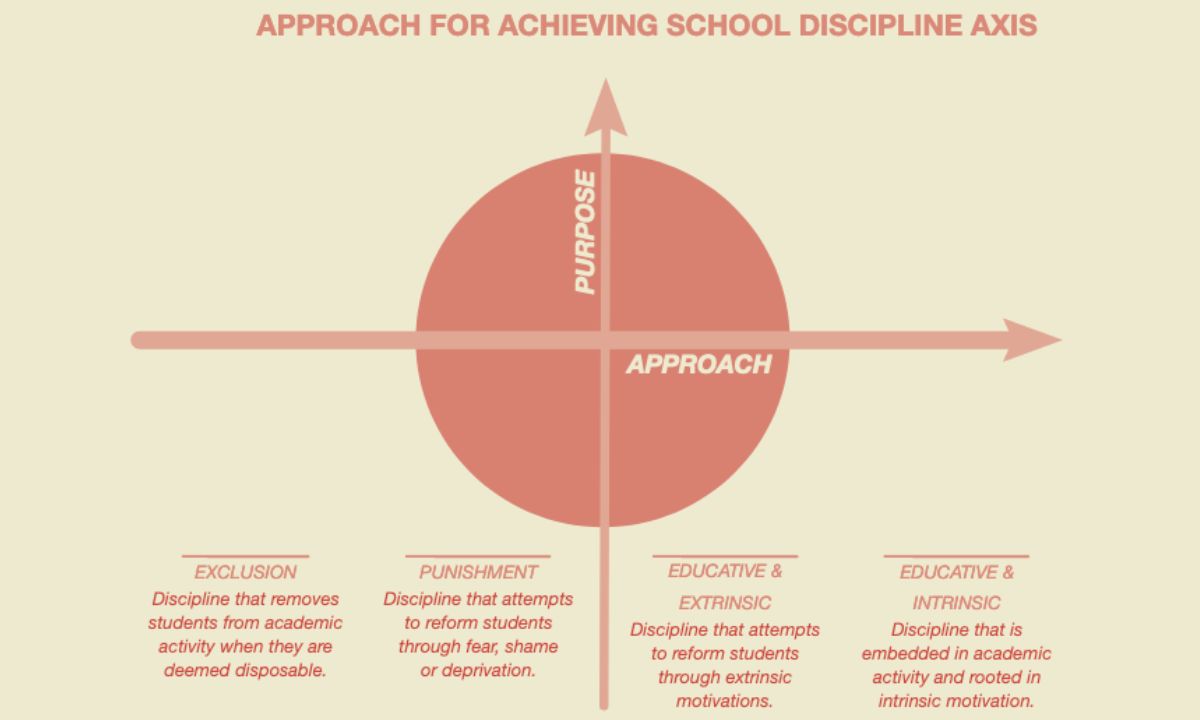Cultural Awareness, Relationships & More — Helping Teachers Deal With Discipline
Educator's View: In my 6 years in the classroom, I learned school discipline was actually less about excluding students and more about including them

Help fund stories like this. Donate now!
This year will likely present unique challenges for teachers and administrators, particularly with school discipline. Not only have math and reading scores plummeted, but more than 80% of public schools report that the pandemic has impacted student behavior and social-emotional development.
Even when suspensions significantly declined through the pandemic, racial disparities in school discipline persisted. COVID-19 only magnified how generations of racist policies and practices that created and replicate those inequities influence school discipline.
While federal guidance and policy recommendations can help shape the conversation, they too often miss the point on practical solutions — particularly the fact that these solutions begin with supporting the day-to-day work of teachers.
For six years as a classroom teacher, I focused on improving school culture and discipline, realizing early on that if I didn’t, the very inclusive classroom spaces I sought to create for my predominantly Black students would be negated by traditional teaching approaches that punish them for culturally and age-appropriate behaviors. It became clear over time that discipline was actually less about practices that excluded students, and more about those that included them.
Here are five ways teachers can be supported to address school discipline this year. They are based on the ideas of my former elementary school students, families and school community in South Los Angeles, in addition to my work as a consultant at the Center for Culturally Responsive Teaching and Learning and research for the California School Discipline Project.
Understand the spectrum of school discipline. Although the past decade has yielded major efforts to reduce punitive discipline practices like suspensions and expulsions, it should be clear that discipline isn’t simply a response to behavior, but instead reflects a school’s values and visions for young people.
In “Beyond Suspension Decline: Transforming School Discipline in California,” my team of researchers and I found that there are varying approaches to school discipline that can be thought of as a continuum. Visualized on a chart divided into quadrants, a vertical axis defines the purpose of school discipline as running from domination to liberation and a horizontal axis defines a range of approaches for achieving it from exclusionary to educative. The latter is generally described as discipline that teaches students to develop self-discipline.
Teachers and administrators engage in different actions based on their beliefs about the purpose of and approaches to discipline. Beginning with this spectrum helps educators map not just where they’re at in their discipline practices, but where they want to be and how they can get there.
Invest in ongoing relationships with students, families and community. While the conversation around school discipline tends to focus on the exclusion of students from the classroom or school after an incident already occurred, the need for discipline is greatly reduced when teachers build strong relationships with their students, families and surrounding community. These relationships help teachers learn more about their students, which not only develops deeper levels of trust but provides reference points for how to create a more inclusive environment that aligns academic and behavioral expectations in school and at home.
Ask the question of relevance. When behavior issues arise and discipline is needed, an often overlooked question is how relevant is what students are learning. Decades of research has found that effective teachers connect what students learn in school with the real, material conditions of their lives. As a way to measure relevance, teachers should question whether every assignment they give students has some immediate, applicable lesson or deepens and widens their connection and understanding of their world. This level of purpose in including and engaging students in their learning can reduce school discipline disparities.
Sharpen culturally responsive teaching skills. Thinking critically about how to teach can help educators gain a deeper understanding of their students’ learning needs. Culturally responsive teaching — which stems from culturally relevant pedagogy — considers students’ cultural backgrounds as strengths in the classroom and as a focal point for how to approach instruction. These include students’ gender, age, socioeconomic status and where they live — is it in the suburbs or a rural area?
For example, in some cultures, interrupting shows engagement in the conversation, not disrespect. Culturally responsive teachers incorporate that in the lesson instead of disciplining students for it. Teachers wield significant power in shaping classrooms to include and validate culturally appropriate behaviors that are often otherwise targeted for exclusionary discipline.
When possible, smile. My students always used to tell me, “Mr. Pham, you should smile more.” I didn’t know it at the time, but their advice is backed by a study that suggests greeting students “at the door sets a positive tone and can increase engagement and reduce disruptive behavior.” Although smiling in school is not always the easiest task, it might be that one small thing teachers can do to have a big impact on what already is proving to be a difficult year for students.
Help fund stories like this. Donate now!

;)
